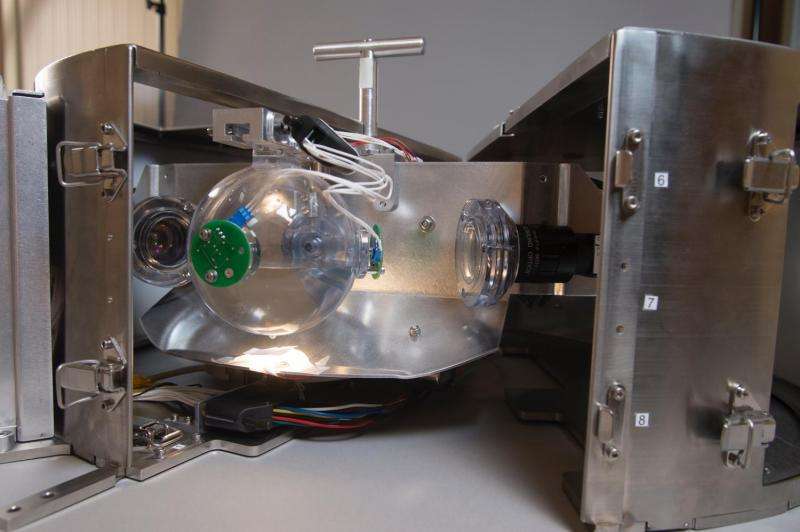Image: French fluidics experiment bound for ISS

Have you ever tried walking while carrying a full cup of water? Your steps invariably cause the water to slosh about, making spills hard to avoid. Now imagine a satellite turning – the fuel inside will slosh, affecting the satellite's stability.
France's CNES space agency Fluidics experiment will run during ESA astronaut Thomas Pesquet's Proxima mission on the International Space Station to probe how fluids behave in weightlessness. Co-funded by Airbus DS, the experiment will help to improve the performance of satellite propellant systems, extending their working lives by using every last drop in their tanks.
A second part of Fluids will look at surface turbulence in liquids. On Earth, gravity and surface tension influence how energy dissipates in waves or ripples. In space, scientists can observe how surface forces behave without gravity – removing one factor simplifies our understanding.
The experiment consists of three small transparent spheres in a centrifuge. One sphere holds water for the wave-turbulence research; the other two carry a special liquid with low viscosity and little surface tension for sloshing.
Provided by European Space Agency



















